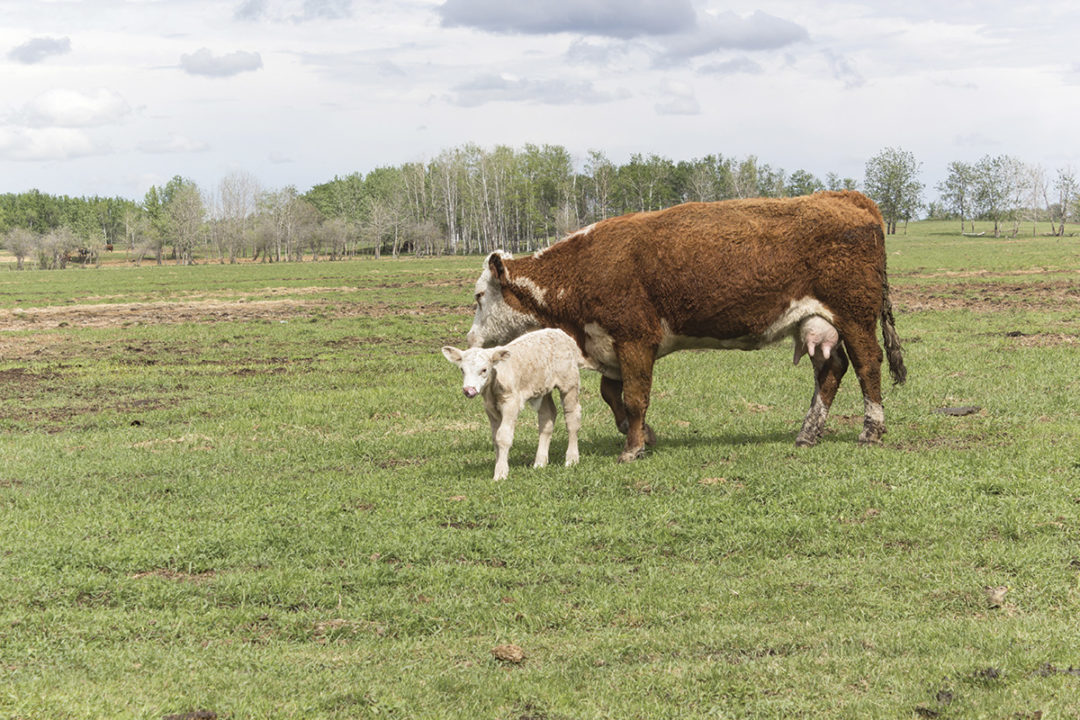Calving season is a critical time for commercial and seedstock beef cow-calf producers alike. To help them prepare, a variety of short- and long-term strategies and plans are devised, which may include specific management decisions plus the acquisition of tools, equipment and information-based resources.
Academic experts, extension educators and veterinarians from across the country explain these plans might contain aspects as technical as the installation of data management systems or basic items as simple as an esophageal feeder.
Here are a few of their answers when asked for their thoughts on must-haves, resources and strategies.
Eric Mousel, Minnesota
“Data clearly shows the number one issue during calving season is calf health [scours] from three days to three months post-calving,” says Eric Mousel, cow-calf management educator at the University of Minnesota.
Mousel says that in Minnesota, 98.7% of calves are born alive, healthy and ready to grow; however, by weaning time in October, the average operation has lost 10% to 12% of its calf crop. Although “calf scours” is a collective term for a host of health maladies ranging from viral, bacterial and/or parasitic infections, Mousel urges producers to prepare a detailed plan of how they’ll handle health issues, especially scours.
“Knowing the signs of sickness before calves are completely immobile is often the difference between successful treatment and death,” he says. “Understanding what to do when certain symptoms appear and when to intervene with medications, electrolytes and/or intravenous fluids is critical.”
Addressing resources, Mousel encourages operators to find a good teacher and learn how to administer basic intravenous fluids to fight dehydration. No medication will magically fix viral problems. He adds, most calves don’t die from infection but from dehydration. At the peak of sickness, inflammation doesn’t allow orally administered fluids to work as well, so intravenous fluids become vital.
“We won't save them all, but we’ll save most of them if it’s done correctly,” Mousel says. “I believe learning this skill is the most important thing we can do for calves.”
Jason Banta, Texas
“The biggest factor for me is body condition scoring [BCS],” says Jason Banta, Texas A&M AgriLife Extension beef cattle specialist. “Ensure they’re in an appropriate BCS going into calving and feed accordingly. If they’re where we need them to be, feed to maintain, and if they’re not, feed to increase their score approaching calving.”
As a general target, Banta believes all females 2 years and older should score 6 or higher. The reason he puts body condition at the top of his list is that it drives pregnancy rates as far as getting cows rebred and delivering a calf the following season.
“BCS will also impact how quickly those that become pregnant actually get bred, so they’re calving sooner in the season,” he says. “And it directly impacts the calf about to be born, because those animals in better condition will generally produce more milk for calf growth.”
Banta adds that keeping females in the proper BCS should be a year-round endeavor with the largest potential feeding changes made after weaning and pre-calving. Most universities, extension services and nutritionists can provide advice, communications and videos on body conditioning scoring.
Banta also places a calving kit at the top of his resource list. It should contain bagged colostrum, but he encourages producers to pay attention to the ingredients, as they vary.
“I prefer a product made from actual colostrum,” he says. “For most beef operations, it’s not practical to freeze fresh colostrum for future use. It’s better and easier to buy a high-quality powdered colostrum. The best ones are good for three years or longer.”
Banta also says it’s essential to have a set of calving chains and handles, plus an esophageal tube feeder or calf tube feeder and bottle. He recommends a multipurpose bottle, nipple and screw-on tube. A printout on assisting with calving from a county office, local extension service or university is also helpful as tips, tricks and timelines might be forgotten.
Brad White, Kansas
Brad White, production medicine director at Kansas State University’s Beef Cattle Institute, agrees a calving kit should top the list of necessary supplies.
“A calving kit should be a box containing the basic materials needed for calving that goes well, and for calving that doesn’t go well,” he says.
For routine, successful calving events, it should contain items such as a list of cows, tags for the calves and binoculars. It should also hold equipment for calving that doesn’t proceed as planned, such as a halter, sleeves, lube and the phone numbers of nearby veterinarians.
Considering resources and management strategies, White encourages the design of an approach for observations and intervention.
“If several cows will be calving in a short period, try to have enough time scheduled for observing,” he recommends. “While calving never seems to come at a convenient time, having to rush from one job to the next makes it even more stressful.”
White also notes an intervention plan is needed, especially for pasture herds.
“Is there a working facility close by? Are phone numbers available for people who could help if needed?” These are questions White says producers need to have answers to beforehand.
Frank Garry, Colorado
Frank Garry, extension specialist, veterinarian and professor of clinical sciences at Colorado State University, believes it’s not easy to choose a single necessary item, as numerous factors are key.
“Normally, I think about maintaining health, managing nutrition and being prepared for dystocia, etc.,” he says. “But I don’t think any single choice is the most valuable.”
He suggests that managers take advantage of the information they see and collect to help analyze future improvements. For example, most use a record book to mark down the dates when calves die, but when asked about the circumstances later, they assume they’ll recall every single incident. He encourages jotting down matters such as birth distribution for reproductive management, dam body condition, age of mortalities, number of treatments, when they were given and at what age.
“Most ranchers can’t provide these types of answers with clarity and certainty,” Garry explains. “Write down these significant details, transfer them into a format for evaluation, and then actually analyze them for help with future improvement.”












